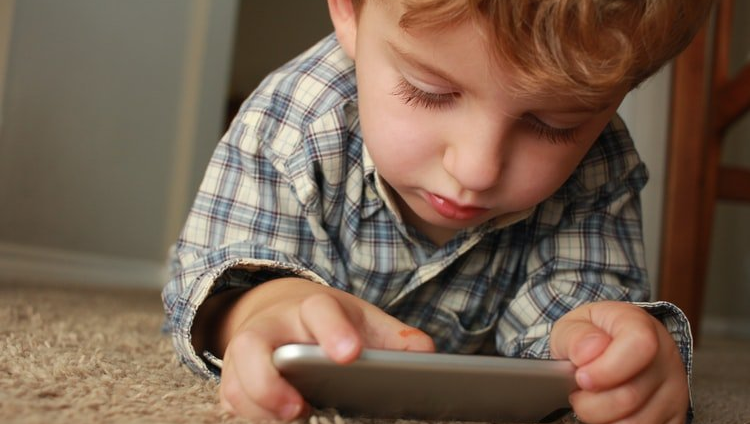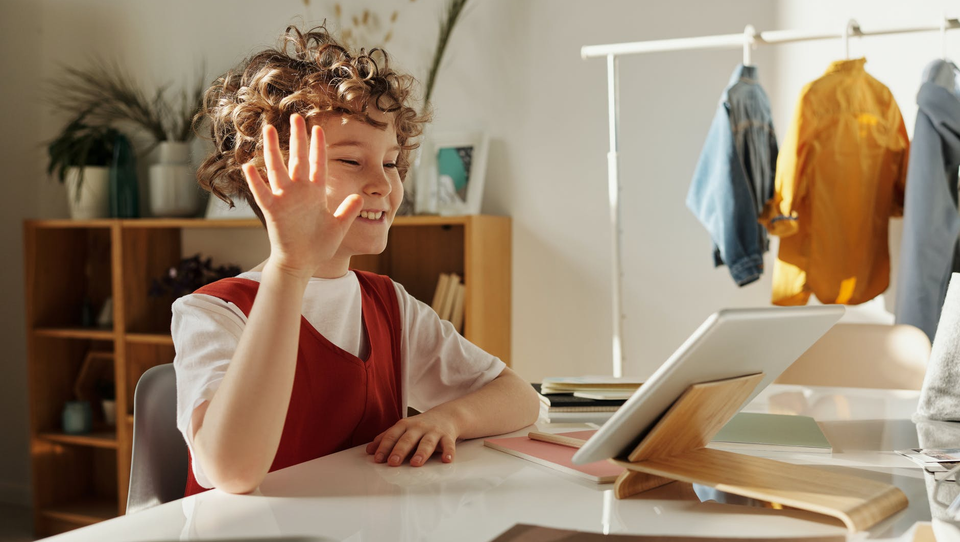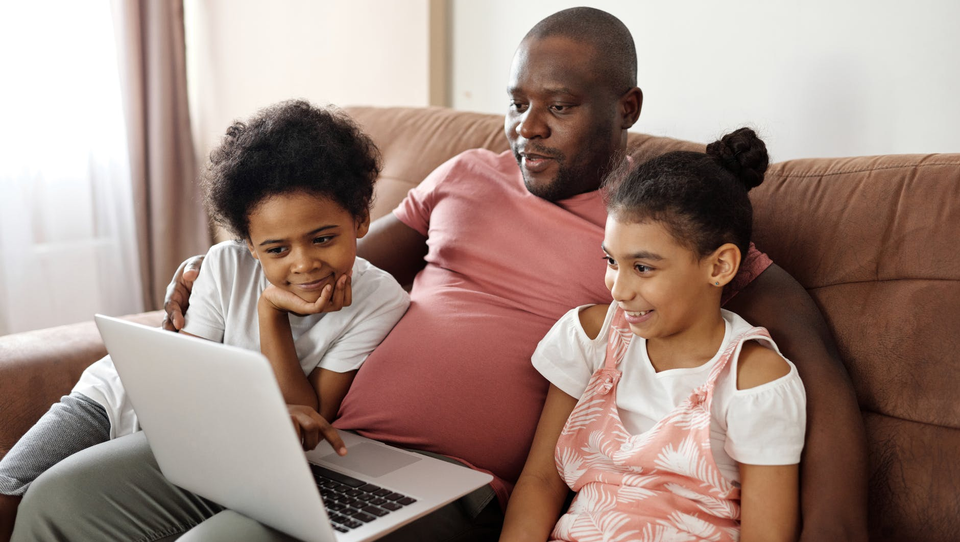Not All Screens Are Made Equal: Should I limit my child’s screen time during the pandemic?
Jun 08, 2020
How much screen time is too much?

With schools in around 190 countries across the world closing in response to the COVID-19 pandemic, many parents are facing a formidable challenge: keeping their children occupied and developing at home. Overnight, students have had to adapt to new routines and parents have taken on new responsibilities as teacher and carer, often all while juggling their own work commitments or financial worries.
Adults and children alike are turning to their screens for a sense of normality, a way to pass the time and to work and study. For parents, giving a child a screen is sure to keep them from bouncing off walls for at least a few hours, providing some much needed respite from 24/7 childcare duties. But many parents are feeling guilty and concerned about the amount of time their children are spending on devices. How much is too much?
The WHO recommends that children under the age of 2 should have no passive screen time whatsoever as excessive use has been linked to language processing delays. Older children, around 2-5 years of age, should be limited to around 1 hour each day. There is no such guidance for older children but excessive screen time is often linked with poor quality of sleep, eye strain and inactivity and weight gain. While all of this is true, never during these studies did a global pandemic come into the equation.
New Rules
It is likely that if you had pre-pandemic screen time rules, they have already been thrown out of the window. With extremely disrupted schedules, it is almost impossible to enforce these limitations. Not only that, screens have taken on new roles as educators as schools and teachers connect with students over these devices. This is an unprecedented time and your child will understand that! Parents can draw up new rules that better suit your family and their current schedules. For example, no screens after a certain time or limit access to devices in children’s bedrooms.
Not All Screens are Made Equal
Studies have found that time spent on devices does not directly negatively impact the development of children. The quality of the content and the interaction with the screen play a key part. Consider this: a child spending 30 minutes passively watching game play on Youtube is far less beneficial than 30 minutes spent playing an educational game. There are definitely ways to make the most out of children’s increased screen time through age-appropriate apps and games that are educational and interactive.
Many games have been found to improve children’s fine motor skills and hand-eye coordination. Scriba and its selection of specially developed games may have significant benefits for children’s fine motor skill development. The therapeutic benefits are currently being qualified in a study with Trinity College Dublin and the Irish National Pediatric Hospital. Find out more here.
Social Life
Adults are not the only ones suffering from a lack of social life and human interaction. Children also miss their friends, grandparents and neighbors. Not being able to go to school and interact with other children can lead to feelings of loneliness and isolation. Even if children are surrounded by family and even siblings, being among children their own age and developmental stage will allow them to interact on similar levels and, together, develop important skills such as sharing, making friends and establishing fair play. Luckily, with huge advancements in technology, children can easily stay in touch with friends and classmates through video and chat apps specially developed for children. While this is no replacement for physical interactions, it will help develop children’s social skills during these difficult times.
Screen Buddies: A Co-View
Screen use is not necessarily a solo experience. Parents may often take a supervisory role when their child is using a device, to ensure content is age-appropriate and suitable, but it can be especially beneficial for children to have caregivers take a more active role in the experience, to ask and answer questions and be engaged with content- this is called having a ‘co-view’.
Alexander Bacalja, lecturer in Language and Literacy at University of Melbourne and advocate for gaming as a tool for education, has some advice for parents looking to take a more active role in their children’s gaming:
“Start by talking with your children about the games they play. Find out which genres and series they enjoy. Investigate other games that share similar features. Sit down and play with them. Take turns slaying a dragon and building a city. The evidence tells us that computer-mediated communication between children and their parents increases closeness. Sharing experiences in the virtual world involves first coming together in the real world.”
In an ever-increasingly digital world, teaching healthy screen habits should be a priority for parents. Healthy screen habits are all about balancing time, content and interaction. Off screen entertainment, play and interaction is important but it is not the end of the world if children are spending more time with screens during the pandemic. Accessing educational content with interactive features will help make the most out of this increased time with screens and support your child’s development.
Articles

The United Nations has described the disruption to education caused by the pandemic as ‘unparalleled’. At the virus’ worldwide peak in April, it is estimated that over 90% of all enrolled learners, from kindergarten to bachelors and beyond, had their education affected by school closures and the pandemic (UNESCO). For many university students and older children, they have had to adapt quickly to online learning. They can keep in touch with their peers and teachers online and continue their studies, albeit in a highly modified way. As challenging as this may be, this experience will help equip them for a future that is increasingly online. For parents of younger children, they are assuming a new role: their child’s home school teacher. This is in addition to their usual childcare and household duties, their work responsibilities and often emotional and financial worries caused by the pandemic. Stressful? Yes. The good, and somewhat surprising, news? The experts advise that you don’t teach your children - at least not in the way you might expect.

If the recent outbreak of Covid-19 has taught us anything, it's that many adults do not wash their hands effectively. It has never been more important that we support our children to develop good personal hygiene to keep themselves and our families safe. This seemingly easy task can be very difficult for children with fine motor skill difficulties. In this article, we explore some ideas to support your child with hand washing.

Lockdown has brought the digital future into the now. Online shopping, entertainment, education and more have moved from the periphery to the mainstream to, in many cases, the only option. With the necessity of social distancing looking to continue for many months, it appears that this rapid digital revolution is here to stay. This means that life as we know it, in most of its sectors, has changed forever. In order to survive, businesses are having to adapt rapidly, embrace technology and look to the future. Architecture is no exception. There has been a widespread adoption of technology and VR over the past few months in response to the lockdown across all of society. Elderly grandparents who were once resistant to adopt new technologies talk of “Zooming” and have started video chatting with their family members to combat loneliness. Art galleries that were once considered stuffy or pretentious are now pioneers in VR technology, with Google Art & Culture offering tours of London’s National Gallery or the Musee D’Orsay in Paris. These virtual tours deliver art in a dynamic new way that can be far more engaging than regular photos. Critics have applauded the panoramic and immersive views of gallery building and exhibitions which work well for rendering of 2 dimensional art, however impressions of sculpture is somewhat lacklustre. With VR technology, users can enjoy a truly immersive experience in the comforts, and safety, of their own home. The COVID-19 pandemic has served as an accelerant for the arts and entertainment industries to embrace VR.





